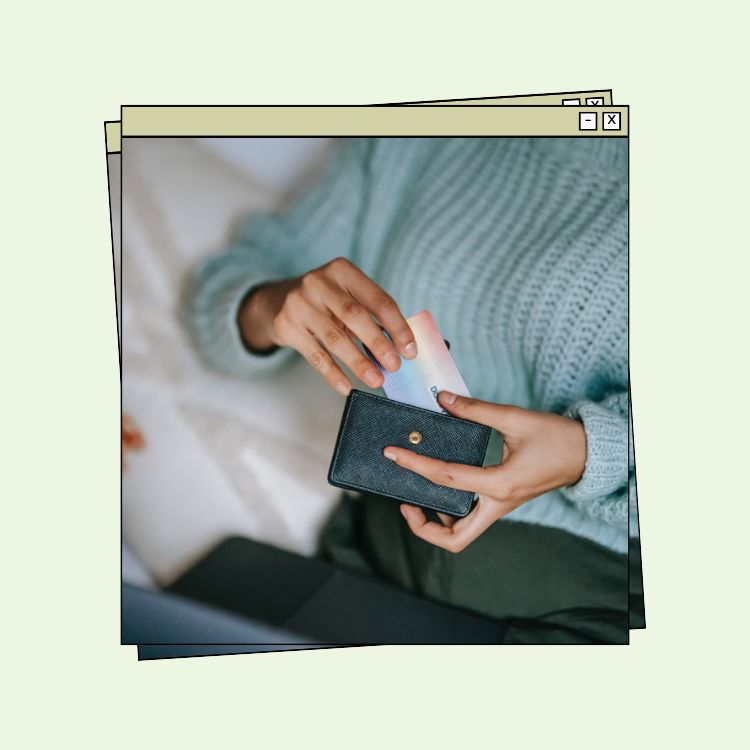They say money can’t buy you happiness. But you know what it can buy you? A European vacation, rooftop drinks, tickets to the Eras Tour—AKA all the best things about summer. While these experiences can definitely enhance life during the warmer months, they can also add up quickly and put a big dent in your bank account.
If you didn’t budget accordingly for your summer spending, you may feel like you’re entering the fall season in a deficit, but don’t worry, you’re not alone. It’s common to spend more money during the summer as we’re outdoors making the most of the nicer weather before we’re stuck indoors during the winter months. Read on for expert-backed tips to help you improve your finances after overspending throughout the summer.
Try a no-spend month
This might seem extreme, but after months of excess spending, it can be helpful to have a hard reset. The premise of a no-spend month is exactly as it sounds. You take a break from buying any non-essentials, whatever that means to you, though it works best if you have strict rules such as only groceries, gas, and recurring monthly bills. This can also be a helpful mental reset as it helps you reconsider what you truly need to spend money on. During the summer, a new bikini or sundress might seem like a must-have item, but come fall during a no-spend month you may realize that you’re perfectly content with the amount of clothing you own and would rather save your money.
Create a zero-based budget
There are plenty of different methods you can use to budget your money, but Ashley Lapato of budgeting app YNAB and @TheOrganizedWallet on TikTok recommends using a zero-based budget. With this method, you funnel your money into different categories, making sure that every dollar you make has a “job.” This ensures that you’re planning how to use your hard-earned money in advance while giving you the flexibility to move funds from one category to another as your needs change. Lapato says, “Giving a job to every single dollar you have right now will help you determine what your true priorities are” and where you can save in the name of recovering after months of spending. The YNAB app uses this method for budgeting, but you can also use a simple spreadsheet to get started.
Participate in a money-saving challenge
I think we can all agree that spending money is more fun than saving money (even though it does feel good to see your savings grow), but one way to make it more fun is by participating in a money-saving challenge. Lapato often participates in the More Money Challenge, but TikTok is full of money-saving challenge videos such as the Penny Saving Challenge, the 20K Savings Challenge, or the Dime Saving Challenge. Since these challenges often have a specific time frame or a goal of a certain amount saved, you can continue to try out different saving methods so you don’t get stagnant or bored of saving.
Use a debt reduction strategy
If you paid for your summer fun with credit cards, you may have a little more debt than you’re used to or comfortable with. It can be tough to feel like you’re constantly putting money toward your credit card bills, especially with interest making it hard to make a dent in your overall balance. Luckily, there are a couple of different methods you can use to help eliminate debt. Vanesa Mullin, a financial advisor for Northwestern Mutual, recommends using either the debt avalanche strategy or the debt snowball strategy. “Debt avalanche focuses on paying off high-interest debt first, while also making minimum payments on all other debts. This strategy saves money in the long run because you’ll end up paying less interest overall,” she says. “Debt snowball focuses on paying off debt with the smallest balance first, while also making the minimum payments on all other debts. This strategy is appealing due to its quick-win nature, which gives people the motivation they need to stay on track.”
Automate your savings
Did you dip into your savings to pay for some of your summer plans? If so, it’s time to build those emergency funds back up. Kendall Meade, Certified Financial Planner at SoFi, suggests automating savings so that you don’t have to rely on willpower alone. “For people who find that they struggle with spending, they may prefer to set up direct deposit so that a portion of their paycheck goes directly to savings, removing the temptation to spend the money instead,” she says. According to Meade, the money is still accessible if needed but without it being in your checking account, you can start to visualize it as separate from your spending money. If you have a few different savings goals, it can also be helpful to open multiple savings accounts such as one for a home down payment, one for emergencies, or one for an upcoming trip.
If you really want to separate your savings from your checking account, you can open a high-yield savings account. A high-yield savings account will passively grow your savings with high annual percentage yields (i.e. free interest added to your balance each month) while also helping you adopt an out-of-site-out-of-mind mentality when it comes to the money your putting into it.
Plan ahead for next summer
While you can’t undo this year’s spending, you can set yourself up for success next summer. According to Mullin, with the right preparation before summer begins, it’s possible to take full advantage of the summer months and control overspending. She recommends reevaluating your budget during the spring, so you know how much money you can put toward fun spending once summer arrives. Some common things to budget for in the summer are vacations, bachelorette parties, weddings, higher electric bills from running the AC, and festivals or concerts. Planning for these things now will mean you get to enjoy summer next year with a little less panic when fall rolls back around.




